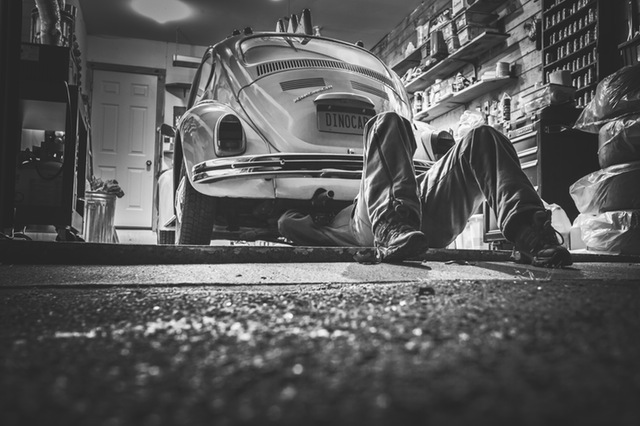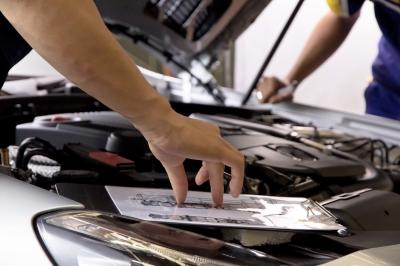
Written by Chris Alcatraz
Insurance Services, Washington State Department of Labor and Industries
Editor’s Note: This article originally ran in the July issue of our monthly magazine Torch Talk. You can find past L&I articles on bbb.org/northwest.
Continuing our series of articles for consumers, workers and business owners, this month we focus on the automotive industry —but don’t scroll away yet! There are some good tips below that will apply to you no matter where you work, or what business you own.
What you should know about risk classifications
In Washington State, the workers’ compensation insurance system uses different risk classifications to set insurance rates based on a number of criteria including the nature of the work for the industry and the exposure to risk for injury. Things like what equipment and materials are used on the job and what duties are performed are considered. Businesses may be assigned to multiple risk classifications if the nature of the work performed is significantly different from job to job.
Example: Risk Classification 3411 covers automobile and RV dealerships, along with repair shops. However, sales personnel at auto and RV dealerships who do not perform vehicle repair or maintenance – and therefore are exposed to less risk for injury on the job — may be reported separately in Risk Classification 6301. This risk class is specifically written to include showing vehicles, performing clerical work and taking test drives.
Why it matters: Premiums, also called rates, vary based on the assigned risk classification. The base rate for auto and RV dealerships is $1.2174 per worker hour in 2016, while the base rate for sales personnel is only $0.3898 per hour. Business owners should check to make sure their worker hours are being reported under the correct risk classification. It makes good business sense to pay only the amount needed for insurance coverage.
The Takeaway: Go to www.Lni.wa.gov/riskclass and use the “Risk Class Lookup” tool to search for risk classifications by key words.
Contact: Call L&I’s Employer Services at 360-902-4817 to talk to your Account Manager if you need additional risk classifications added to cover your business, or if you have questions on how your workers are classified.
Watch out for injuries!
Around 33 percent of all job-related injuries that occur at automobile and RV dealerships, parts stores and auto repair shops are related to strains and sprains.
Examples:
- Lifting and carrying heavy parts to and from storage.

- Holding heavy parts in place during installation.
- Lifting and lowering wheels during service.
- Working for long periods in awkward positions, such as bending at the back, kneeling, squatting.
- Reaching overhead, lifting above the shoulders or below the knees.
- Using heavy tools, or tools that require a lot of force to operate
Why it matters: You can prevent injuries by knowing what to look out for, and by being mindful of the risk of awkward postures while you are working.
The Takeaway: L&I’s website contains information on Washington laws for safe workplaces, as well as some great tips for keeping workers and do-it-yourselfers safe. Check out these resources for:
- Motor Vehicles
- Hand & Portable Power Tools
- Machine Safety
- Painting Hazards
- Emergency Washing
- Personal Protective Equipment
- Chemical Hazard Communication
Contact: L&I offers businesses free consultation services for safety, risk and ergonomics assessments. Safety and Health Consultations include going over your Accident Prevention Program, plus looking for hidden hazards that could cause injury or illness, and providing air and noise monitoring services. Risk Management Consultations provide you with information on how to protect your Claim-Free Discount and manage an injury claim to maximize recovery and control costs. Ergonomics Specialists can come to your worksite and spot potential causes for sprains and strains. Find out more about L&I’s free consultation services for businesses at www.Lni.wa.gov/safety/consultation .
Injured at work? Advice for workers and employers
If you are injured at work, be sure to notify your employer and seek necessary medical treatment as soon as possible. If you need help finding an L&I network medical provider, go to www.Lni.wa.gov/FindADoc. Your medical provider can assist you with filing a workers’ compensation claim, or you can file online at www.Lni.wa.gov/FileFast or call 1-877-561-3453 to file a claim by phone.
Your medical provider will give you a form noting any work restrictions. Ask your employer about light-duty if you do have work restrictions. L&I staff can assist your employer if needed by helping identify light-duty tasks that will meet your medical restrictions while you recover.
Light-Duty Work Examples:
- Parts Driver
- Repair estimator
- Inventory
- Tool cleaner
- Light mechanical work such as oil changes
- Checking in customers, scheduling appointments and cashiering
Why it matters: Returning to work in a medically-appropriate light-duty or modified job has been proven to speed the recovery process, and reduces the risk of depression and permanent disability.
The Takeaway: Washington’s Stay at Work Program reimburses eligible employers for a significant portion of the costs to support medically-approved light-duty, including:
- 50 percent of the base wages paid to injured worker (up to $10,000 or 66 days).
- Up to $2,500 for equipment and tools.
- Up to $1,000 for training and materials.
- Up to $400 for clothing for the light-duty job.
Reimbursements may include funds towards purchasing a lift, or special gloves to reduce vibration to the hands, for example. Businesses need to meet certain criteria for the reimbursement, so it’s best to understand how the program works before an injury occurs.
Contact: To learn more, go to www.Lni.wa.gov/StayAtWork or email staff at StayAtWork@LNI.wa.gov or call 1-866-406-2482.
Making it easier to do business
Insurance coverage for occupational and industrial insurance, also known as worker’s compensation, is offered to most businesses exclusively through the Washington State Department of Labor and Industries (L&I). Supporting businesses with information to help make workplaces safe and help injured workers heal and return to work are two priority goals. If you have any questions about your coverage, check out the information and resources available at www.Lni.wa.gov or contact your L&I Account Manager.



You must be logged in to post a comment.